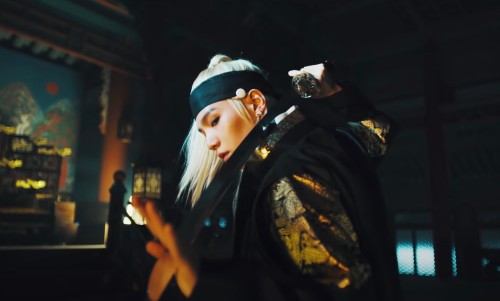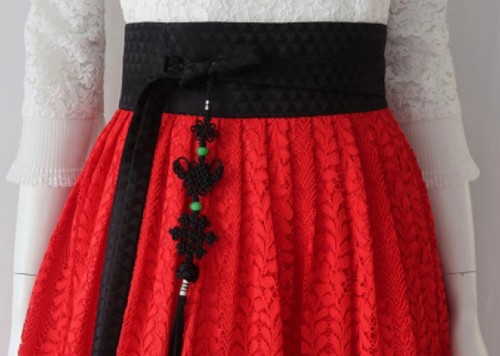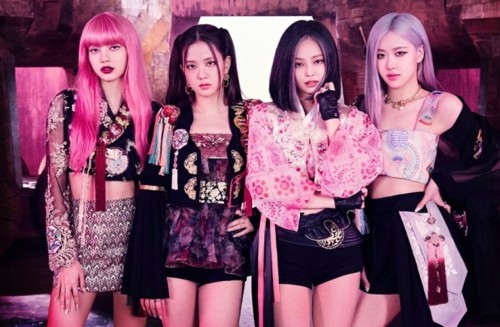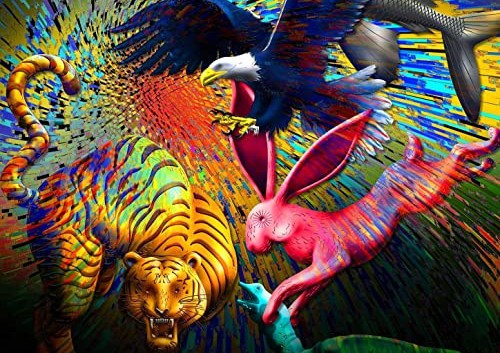
With every passing year, traditional culture becomes a more and more distant thing. It happens all over the world as countries advance and lifestyles change to suit a modernizing society. Clothes that carry a cultural importance are worn only on special occasions, and music from the olden days is limited to occasional performances. Generation after generation evolves alongside a constantly developing society, and in the rush to advance, important traditions can risk falling behind. However, over the past few years, Korea has seen a return of some of these traditional aspects. Many people working in different industries, such as fashion and music, are working hard to preserve Korean history and culture by integrating them into the modern world and society.
Hanbok for the 21st Century
The most famous traditional Korean piece of clothing is the hanbok, a style whose origins can be traced all the way back to the Three Kingdoms of Korea. There are many different variations—after all, hanbok literally translates into “Korean clothing” and encompasses many different styles—but the most well-known look is a two-piece outfit which consists of a long, high-waisted skirt, and a wrapped top. Hanboks are usually vibrant and colorful, with gorgeous patterns and accessories to add. In spite of their beauty, they are not very convenient for modern society and busy lifestyles. For a western equivalent, the hanbok is like a Victorian ball gown; not something you would normally see when walking down the street. Pretty to look at, but difficult to wear on a hectic day.

Recently, however, many tailors and artisans in Korea have begun creating a so-called modern hanbok or lifestyle hanbok which can be worn as part of a casual or smart outfit. The modernized hanbok is shortened a bit for convenience and made with modern cuts and designs but maintains the high waist and shape of its traditional inspiration. The jeogori (blouse shirt or jacket) is made in different styles: some are more form-fitting with tighter sleeves and a longer body like a modern T-shirt, while others keep the loose shape and act like an overcoat. What do both versions have in common? They keep the wrapped ties and overall design of its predecessor. Although there are many more, these are just two examples of how hanbok is being altered to better blend into today’s society and trends. Kim Shin-hyeong (Senior, Faculty of Business Administration) expressed a great appreciation for this modernization, saying “Hanbok is not just beautiful, but carries a lot of historical importance for Koreans. That is why it is great to see designers work hard to maintain this tradition and make it more accessible to future generations.”
These clothes show an effort to bring Korean traditional culture back into the 21st century, and it certainly had an impact. Celebrities such as Blackpink and BTS have worn these modern hanboks in their music videos and performances, which are broadcasted worldwide. As a result, fans in both Korea and overseas have expressed amazement over the style of clothing, and many have developed a keen interest in this modernized version of traditional Korean clothing. These two groups started a trend amongst other celebrities, and the Korean Wave is now full of idols who wear these lifestyle hanbok both on and off stage.

Mixing Classical with HipHop
Music with a modern interpretation of Korean traditional music is also drawing attention. In 2020, Korean rapper Agust D, released his album with the title track Daechwita. The name itself refers to a genre of traditional Korean marching music for kings and armies, characterized by traditional Korean instruments such as a haegeum (a type of fiddle), a piri (a bamboo flute) and a jing (gong), all of which can be heard in his song. These instruments are mixed with modern styles and blend well together, they are compatible despite hailing from very different eras of music. “Reinterpreting gugak (traditional Korean music) in this way will promote our history and culture to the world. It is also a great way for kids in Korea to develop an interest for their own country’s traditions,” Kim said. The entire music video also carries traditional aspects, playing out in historical settings with modern elements. The song is full of references to Korea’s history, such as Gwanghaegun, one of the kings of Joseon dynasty, and Sadoseja, a prince who died after his father locked him inside a rice chest. These lyrics are full of traditional Korean culture, yet they are performed with modern rap lyrics. According to Lim Jae-won, director general of the National Gugak Center, the song Daechwita caused a great increase in requests to demand more information about gugak.
Another band, LeeNalchi, is also making waves with their unique music blending modern pop with pansori (Korean musical storytelling). The band named themselves after Lee Nal-chi, a pansori singer in the Joseon Dynasty whose music was known for encouraging people to dance along to it. With a catchy beat you could hear at a disco, the band reinterprets traditional pansori tales, such as Sugungga, which revolves around a turtle deceived by a rabbit while obtaining medicine for the sick dragon king. LeeNalchi’s first album is named after the tale and every track is titled after details in this pansori story. Through their lyrics, the band applies these traditional tales to modern society, which resonates deeply with their listeners. This blend of musical styles has received stellar praise and has ignited a passion for gugak in Korean and foreign audiences.

Try Tradition!
History and culture go hand in hand, and it is important to keep both intact, even in a world reigned by globalization. It can be easy to forget one’s roots when every country is constantly influenced by others, but with the modernization of traditional aspects, it has become more convenient to carry a piece of Korea’s culture wherever you go. Tie a Korean traditional ornament, norigae, to the strap of your bag. Spice up your outfit with a stylish hanbok. You might stand out from the crowd, but it will be to looks of amazement!
By Maja Elisabeth von Bruun, Student Editor

